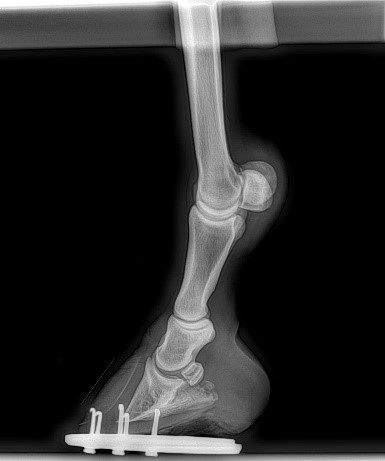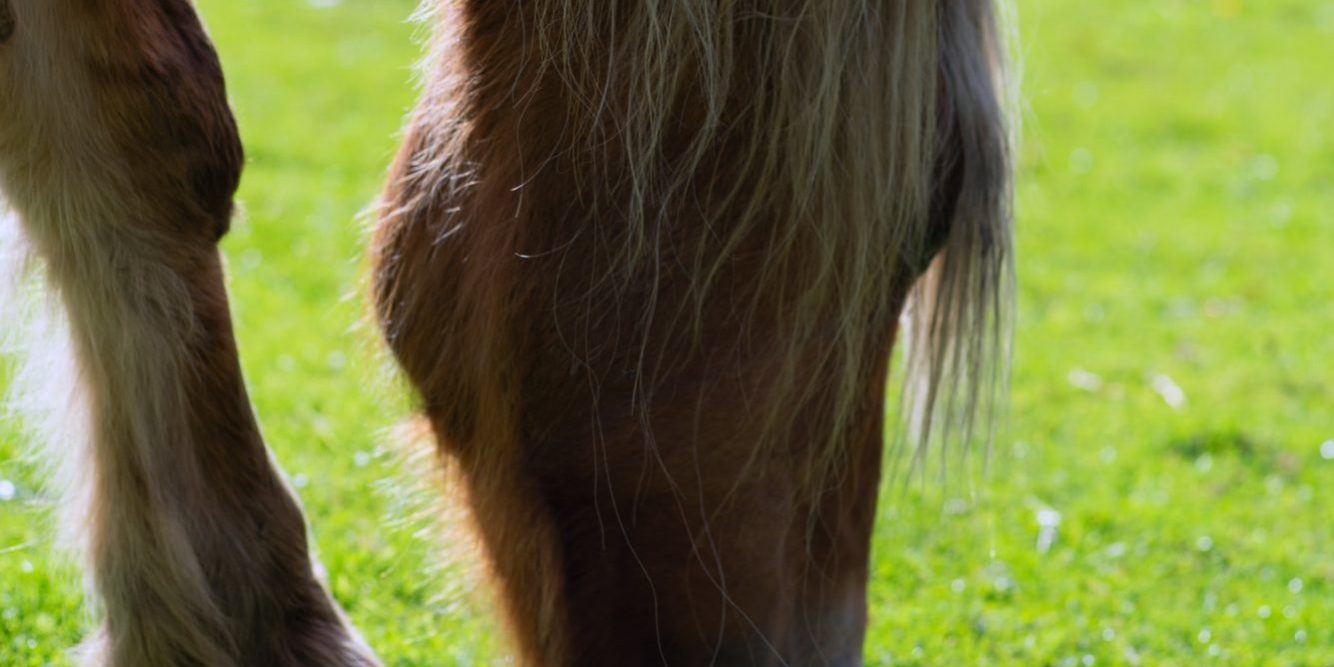WHAT IS LAMINITIS?

The most common causes are grain engorgement, grazing in lush pastures, post foaling uterine infections, certain types of bacterial pneumonia and other infections. In fat ponies it is common to find laminitis during the spring months, where the carbohydrate content of the pasture increases in grasses and clovers.
SIGNS OF LAMINITIS
- Although all four feet may be involved in laminitis it is more commonly the forelimbs that are affected than the hindlimbs.
- Affected horses show reluctance to move and the horse places more of its weight on its hindlimbs with the forelimbs placed well out in front of the body.
- Horse or pony lying down for long periods, with reluctance to stand up.
- There is increased heat around the coronet and a bounding digital pulse.
WHAT TO DO?
It is important to give us a call so we can examine the affected horse and assess the severity of the laminitis. Different treatment regimes will be required depending on the cause of the laminitis.
If the horse or pony is shod the shoes should be removed.
In severe cases, horses should be confined to a stall with a deep bed of sand (best) or fine wood shavings or sawdust. Being confined on sand will help support the frog, prevent excessive walking and help prevent further pedal bone rotation.
Padded bandaging to the sole can also assist to support the frog.
Where the horse has become overweight and has developed laminitis on fresh spring grass it is imperative to remove it from grass and feed a low energy, high fibre diet. Meadow hay is the best option. The feed quantity should be reduced and is best discussed with us on a case by case basis.
Radiographs should be considered to evaluate the degree of rotation of the pedal bone and the severity of the case. This information can then be used to assess the degree of corrective hoof trimming that is required to rebalance the hoof in collaboration with a farrier.
Anti-inflammatory drugs can be given to assist with pain relief.
LAMINITIS PREVENTION
As mentioned above laminitis develops as a sequelae to other disease processes in the body other than the foot. Therefore, it is paramount that the primary disease is treated urgently and effectively. Nevertheless severe laminitis can still be the outcome despite everyone’s best efforts.
Avoiding feeding ponies and horses too much quality spring grass is of huge importance. This can be achieved by yarding or boxing a horse and feeding meadow hay made in the summer. Soaking hay in water for an hour will also significantly reduce the water soluble carbohydrates in the hay. Where this is difficult, grass muzzles have been used successfully to limit grass intake.
Pony breeds in particular are prone to obesity and obese ponies are at high risk of developing laminitis. The weight and body condition of ponies should be monitored regularly and their diets adjusted accordingly.
Founderguard is an antibiotic formulation that can be fed to horses and ponies at pasture. It may control hindgut carbohydrate fermentation to levels that prevent serious laminitis.




